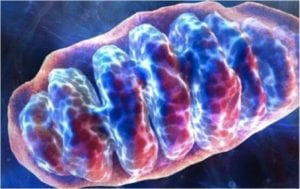Why Coordination Is More Important Than Strength
I love working with bodies. They’re amazing. We are evolved to be as efficient as possible at all times, and strength, power and endurance are no different.
That’s me, three days ago, on my fourth set of three 50 kg close-grip bench press. It was only on the fifth and final set that I struggled. Up until then, I barely blinked.
Ten weeks ago, when I started training with my PT Larissa Watt at Snap Fitness in South Yarra, my RM (repetition maximum) at 40 kg was two.
That’s right: the total number of times I could complete a 40 kg bench was two reps.
Since then, I’ve gained a seemingly pathetic 500g in weight, and my body fat has dropped by only 1%.
So what’s going on? If I’m not getting much bigger, where is all this extra juice coming from?
Turns out there is a LOT more to strength than straight-up bicep size.
Raw power is not the best way to move a weight.
Well… that is, when it comes to muscle power, anyway.
Your muscles do not operate in isolation. They must coordinate with each other, along a primary chain as well as distributed throughout the integrated structure of your body, in order to efficiently shift a load.
Whether you’re bench pressing, deadlifting, or just hoisting your kid into bed at night, you need a whole system that is geared and ready for the job. If there’s a weakness anywhere in the system, there’s a weakness in the movement and the total power generated.
A small person who is efficient will often out-lift an uncoordinated, unbalanced Goliath. An olympic weightlifter will easily out-lift a bodybuilder of the same weight class—Every. Single. Time.
Keys to efficient lifting
There are three components to efficient lifting, and we’ll go through them one by one:
- Energy conversion (cellular level)
- Neuromuscular recruitment (muscular level)
- Coordination (global level)
1. Energy conversion
Mitochondria, the tiny organelles embedded in all cells – including muscle cells – are the most efficient source of energy for your muscles. Glucose enters the cells, and your mitochondria convert that glucose into ATP, which your muscles then burn during movement.

Thus, the more mitochondria you have inside your muscle cells, the more energy you have available to use.
However, your body likes to be efficient. So if you don’t use your muscles much, the number of mitochondria will be lower. It will only raise the number of mitochondria if it needs to.
With training, your body proliferates (raises) the number of mitochondria in response to increased demand. This can happen fast – you might notice sudden improvements within just a couple of weeks.
They stick around for a while, too: they don’t drop off much in number until about four weeks after you cease training, at which point they careen off the cliff like suicidal lemmings.
2. Neuromuscular recruitment
When you begin a new exercise, you brain spends a lot of concentration and energy attempting to learn the new movement pattern. During this initial phase, your brain tends to overcompensate, recruiting way more muscular activity than is really needed in order to “just do the job by any means necessary.”
Believe it or not, before regular training your brain may only recruit as few as half of the fibers within a given muscle. This is part of why it goes mental recruiting as many muscles together as possible to move the load, expending more energy than is really necessary.
After some practice – a bunch of neurological trial-and-error – your brain inevitably optimises recruitment and energy expenditure.
Your brain figures out how to optimise the recruitment of the muscles it needs to move the load, and the number of fibers recruited within those muscles increases.
At that point things seem to become much easier. You’re no longer recruiting muscles you don’t need, plus you’re recruiting only the fibers within working muscles that are required, and no more.
In the end, efficiency prevails. You can now move a much higher load with much less energy.
3. Coordination
The gains from efficient recruitment are especially apparent with complex, compound movements involving multiple joints. A chin-up, a press-up, a plank, or a row require tens or possibly over a hundred different muscles to combine forces to move the load.
Think about it: if even some of those muscles aren’t coordinating with each other, the loss in efficiency is huge, since other muscles then have to compensate.
But when they work together in a symphony of smooth, fluid coordination, their combined strength is enormous. Just one of those muscles is incredibly strong, given just a few weeks of training. When you add all that strength together, the improvements in a very small amount of time can be stunning.
Summary
The effects of these three factors explains, roughly, why astonishing gains in performance can be achieved within the first few weeks of regular training. After that, improvements tend to plateau for a while.
Why the plateau? Well, once all the efficiency gains are covered, the next phase is actual muscle growth. It’s only after this initial phase that size becomes important. Even then, size it will never be more important than efficiency.
At some point, though, if I fail to grow my muscles, I’ll hit a ceiling in performance and further improvements will be small (unless I go hardcore into the calisthenics – but that discussion will require another blog post).
So, for me, being an ectomorph, my nutrition becomes the next key to my performance improvements.
My goal is to do handstands, handstand push ups, and hand-balancing. I also aim to do muscle-ups. If I’m going to get there, my coordination and recruitment will need to be highly-trained and practiced.
I’m having a hell of a lot of fun getting there. 🙂

